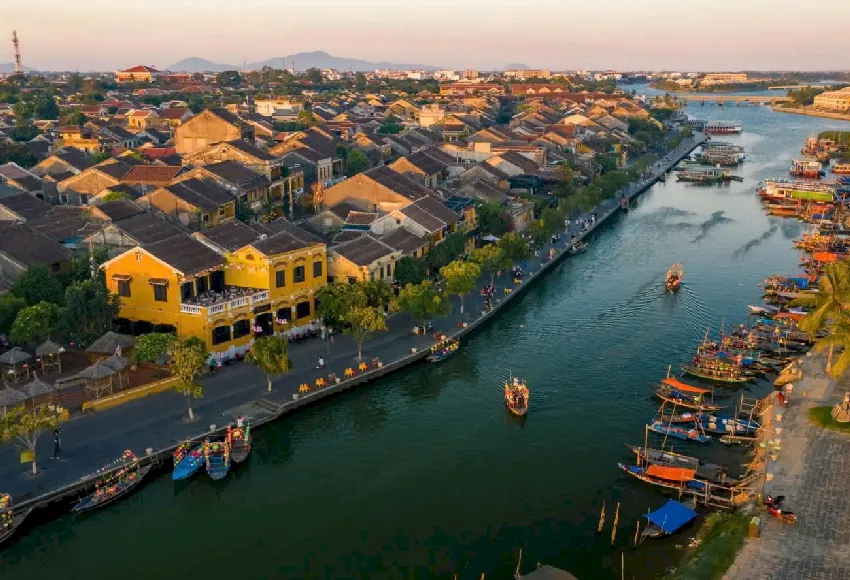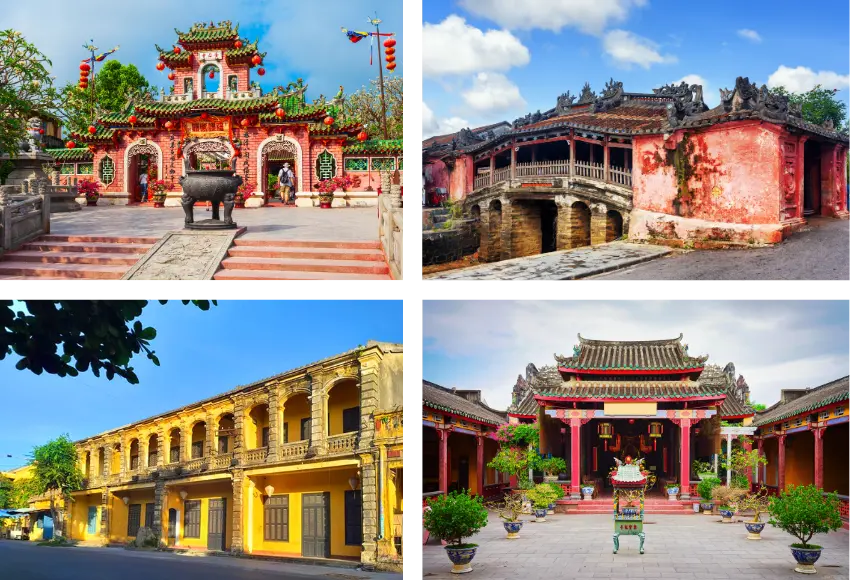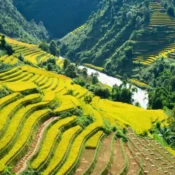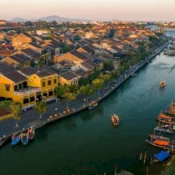The Uniqueness of Hoi An Architecture

The Uniqueness of Hoi An Architecture
Established as a seaside trade port in the late 16th century, Hoi An once attracted many traders from around the world who came to live and do business here. The town’s stories reveal that its residents are not only Vietnamese but also from a variety of other countries like China, Japan, and Western nations.

Colours of Hoi An
The best way to dive deep into the diversity of the town is to explore the unique architectural styles. Hoi An’s main colour is yellow – the colour of houses, featuring green and brown of trees and wooden exteriors, creates an ancient but lively look. Narrow, paved with stone streets like the bloodline of the town, where old houses were built close together, facing the street with their backs toward the Thu Bon River, made it ideal for trading in the past.

“Tube house”
The long and narrow “tube houses” with one or two stories are the most common here due to the harsh weather conditions of this area. These houses were built to against storms and floods, so they’re often built from quality materials, which have high stability and durability. At a glance, they might be similar to each other due to their looks, and every house has an ancestral altar. In fact, each house is unique based on who built it. Some old houses, which were built by rich traders, politicians, hall leaders, or Christian missionaries, are spacious, featuring an inner yard. Besides, the arrangement of interiors is quite different between houses due to spiritual and feng shui beliefs in East Asian cultures.

From the top left, clockwise: Fujian Assembly Hall, Japanese Covered Bridge, Hainan Assembly Hall, Old French House
We can see the influences of other cultures in the town’s architecture, like the Fujian, Chaozhou, Hainan, Cantonese, and Chinese Assembly Halls, which represent Chinese culture. The Japanese also left their footprint in the Japanese Covered Bridge with a pagoda in the middle, which is also the point that marks the trading activities between the Chinese and Japanese on two sides of the river. Besides, the French also built a school, known as Nguyen Hue Primary School today; villas that are located around the town; and government buildings like Hoi An Post from the colonial era, which can easily be recognised by their thick walls, high windows, tile roofs, and iron balconies.

lanterns on the streets and floating lanterns on the river
An important element that creates gorgeous Hoi An Town architecture is the lantern, which perfectly complements the streets and boats along the Thu Bon River. The colourful lanterns around the town at night make Hoi An one of the best destinations for couples in the world.




